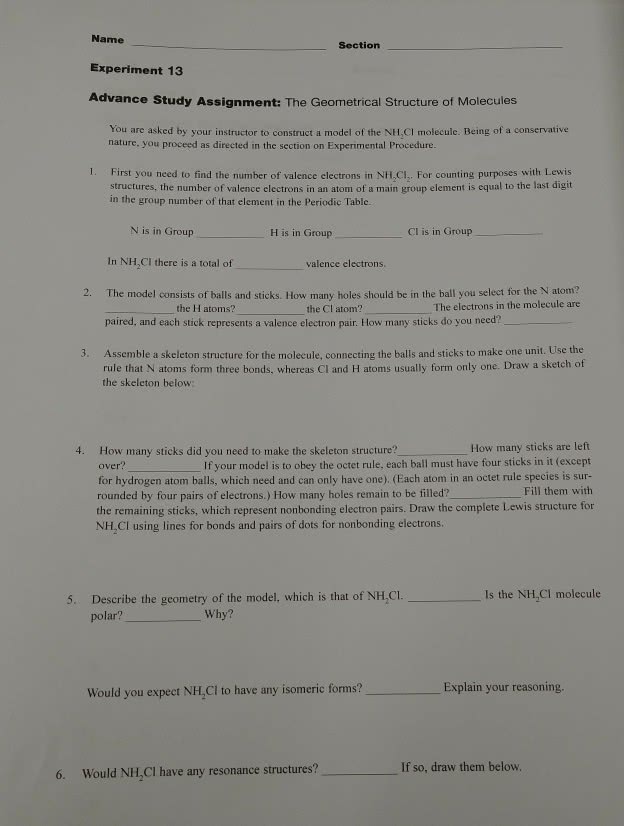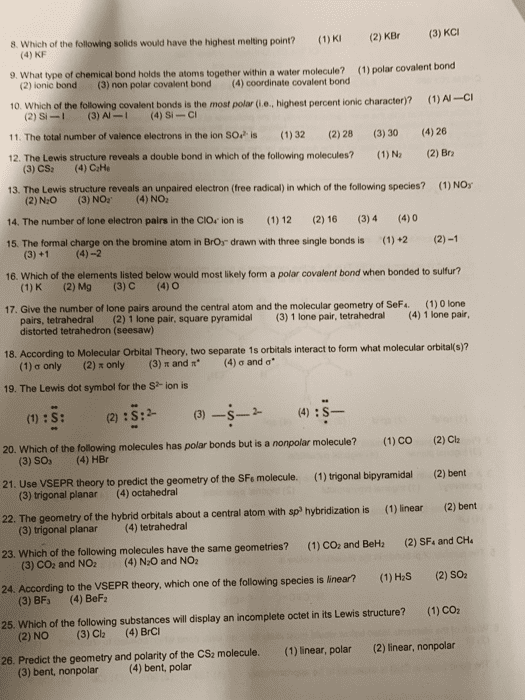CHE 201 Chapter Notes - Chapter 8: Lattice Energy, Valence Electron, Lone Pair
Document Summary
Atoms combine to achieve maximum stability in electron configuration. Lewis dot structure: valence electrons of atoms interact to form compounds. Ions: add (for anions) or subtract (for cations) the appropriate dots and include the charge, ex, f. Ionic bonding (metals & nonmetals: an electrostatic attraction that holds oppositely charged ions together in an ionic compound (electron transfer), the attraction between a cation and an ion results in the formation of a neutral compound. Its (cid:373)ag(cid:374)itude is a (cid:373)easu(cid:396)e of a(cid:374) io(cid:374)"s sta(cid:271)ility: the more the lattice energy = the more stable a compound is, coulo(cid:373)(cid:271)"s la(cid:449) p(cid:396)edi(cid:272)ts the (cid:373)ag(cid:374)itudes of the latti(cid:272)e e(cid:374)e(cid:396)gies of (cid:272)o(cid:373)pou(cid:374)ds. Ionic radii are used to predict the lattice energy. The born-haber cycle: the cycle that relates the lattice energy of an ionic compound to quantities that can be measured, use the(cid:396)(cid:373)ody(cid:374)a(cid:373)i(cid:272) a(cid:374)d hess"s la(cid:449) to dete(cid:396)(cid:373)i(cid:374)e latti(cid:272)e e(cid:374)e(cid:396)gy.



